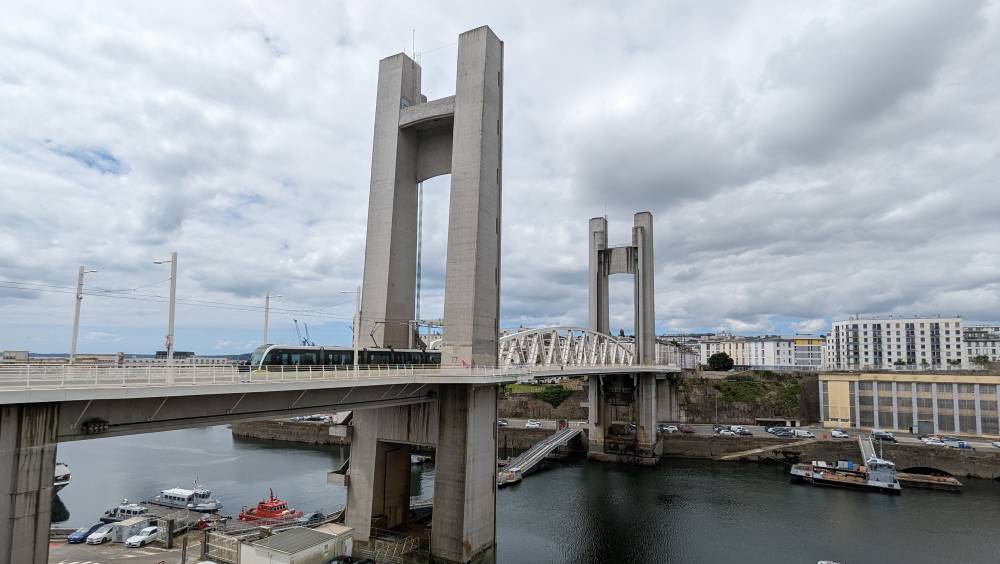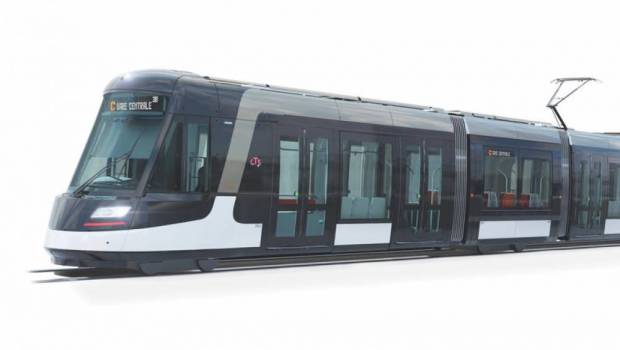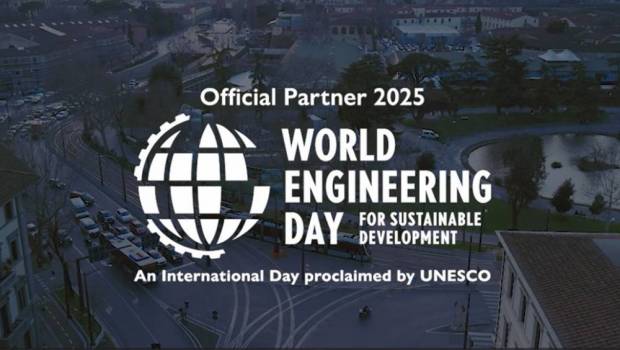At the beginning of the 90s, the project for a tramway line was sunk by a local referendum (80% against), but in 2002, the transport plan for the Brest metropolitan area (29) included tramway line A (opened in June 2012) as well as the route of the BHNS (Bus à Haut Niveau de Services) and B tramway lines. ‘Planning an urban development and mobility project takes place over a long period of time. Today we are implementing what our predecessors conceived and planned over 20 years ago,’ says Fabien Peyrard, Project Manager at Brest Métropole. Linking east and west, the current line A does not serve some strategic sites such as the multimodal interchange (PEM) at the station, or the universities. Line B, 5 km long, will fill this gap by 2026. "Over 5 km, line B will complete the existing network. It will serve the station, the two hospital sites, the university sites and the higher education institutions" adds Fabien Peyrard. This transport service will be accompanied by an urban renewal of public spaces, and will meet the expectations of local residents, with almost 25,000 passengers expected each day. ‘Having connections between the two lines will attract a lot of people. We’re expecting a network effect, like other conurbations that have several tramway lines.
PUBLICITÉ
A new ‘multi-tubular’ was built to connect it to a substation to supply power to line B.
Perfect integration
However, with no fewer than 5 structures along the route, interfacing with the existing infrastructure is not easy. "The topography of Brest is made up of valleys, which are all obstacles to be crossed. Several of these are unusual engineering structures, such as the Villeneuve bridge, which will be widened" adds Fabien Peyrard. It should be noted that the integration of this new line did not encounter any particular difficulties with regard to the Architectes des Bâtiments de France (ABF), which meant that we were able to stick with conventional solutions for the LAC, the contract for which was awarded to ETF.
Recycled materials
An important aspect of this project is the reuse of excavated materials. This is a commitment made by the metropolitan authority’s team, which will help to reduce waste and, consequently, the need to transport it.
An important aspect of this project is the reuse of excavated materials. This is a commitment made by the metropolitan authority’s team, which will help to reduce waste and, consequently, the need to transport it.
However, the location of the foundations was discussed, in particular near the Place de la Liberté at the level of the war memorial, in order to preserve the architectural perspective of the site. "We worked in a spirit of co-construction to come up with a technical solution that met the ABF’s requirements" explains Caroline Vilotitch, deputy director of the "Mon réseau grandit project".
Pending the installation of a turnout system (AdV), the blocks have been stopped at an angle, in order to manage the interface between the conventional slab and the floating slab of the AdV.
Summer operations
In order to keep to a very tight schedule, the Colas project - Colas Rail - Colas-Aximum consortium, holder of the works contract for the 2nd tramway line (civil engineering works and track laying), decided to deploy several teams (building the multi-tubular, building the LAC masives, track laying and roadworks) in the area where line A and B connect. While the earthworks and network dismantling work proceeded apace, it was between 18 July (just after the maritime festivities) and 30 August 2024 that two major operations (OPC) to connect lines A and B were carried out, resulting in the closure of traffic on avenue Clémenceau and a complete halt to traffic on line A. "Operations have been completely shut down, as Colas Rail teams are working on several sites" explains Caroline Vilotitch. These works include the replacement of a curved section of rail, the refurbishment of the maintenance centre (refurbishment of the centralised control centre and the tramway entry/exit junction), and the welding of the rails on a symbolic and unusual piece of track known as ‘the cross’. "We connected the crossing, which was laid during the line A worksite in 2011, with 6 m sections of rail so that the teams could work more than 3 m from the line gauge in complete safety" explains Benoit Lemercier, Project Director, Colas Rail. After these summer OPCs, the project will take a new turn with the installation of the turnouts (supplied by Vossloh). The line is due to be delivered at the end of 2025, when the trains will be tested, with a view to opening in early 2026. To be continued...
Key figures
5.1 km / 11 stations / 8 trainsets / 225 M€ total
5.1 km / 11 stations / 8 trainsets / 225 M€ total
From the station’s multimodal hub, line B will serve the hospital and university sites.


















